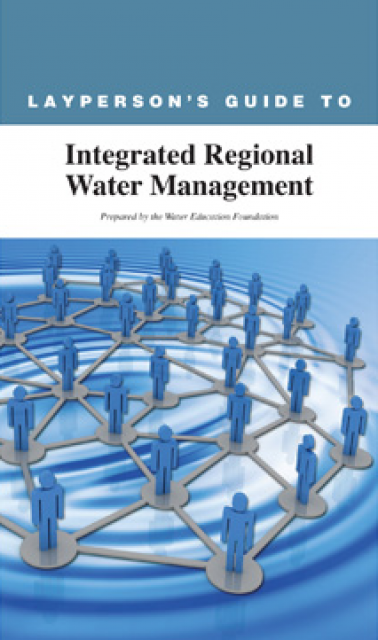Integrated Regional Water Management
Integrated Regional Water Management, commonly known as IRWM, aims to collectively manage all aspects of water resources in a region.
This approach includes all constituencies, including those that traditionally have been outside of the water planning and policy process such as tribal representatives.
IRWM reflects an increasing regional self-reliance to meet water supply needs and the recognition that regional water assets, such as groundwater banking, are necessary to reduce the need for water conveyed over long distances.
IRWM stresses that water resources are usually not confined to simple boundaries that fall under the jurisdiction of a single management agency. Instead water resources often flow across regions and in turn require a consensus-based, cross-jurisdictional, regional approach. Along the way, water purveyors, planners, landowners, stakeholders, and others become involved and thus integral to IRWM planning. Programs typically include components of land use planning, environmental protection/restoration and groundwater management.
Another key element of IRWM is the groundwater-surface water connection and how local agencies can provide optimal management for both resources. This can take place through groundwater recharge basins that provide multiple benefits for recreation, wildlife habitat and stormwater management. This understanding has fostered awareness that land use planning should be more closely aligned with watershed planning.
Integrated Regional Water Management Background
Elements of IRWM have been used since the 1970s but only in the past decade has it become a key part of the water management conversation. Currently, IRWM is a major component of the California Department of Water Resources’ California Water Plan (also known as Bulletin 160 that is updated every five years).
California voters approved bond funding in 2002 and 2005 for IRWM plans. The 2013 updated California Water Plan noted the importance of IRWM: “Integrated water management provides a set of principles and practices that include strengthening government agency alignment through an open and transparent planning process. This leads to stakeholder and decision-maker support for investment in various aspects of resource management, such as innovation and infrastructure. Ultimately, integrated water management can expedite implementation through increased advocacy, as well as a greater number and variety of potential implementers and financiers.”
The 2013 Plan noted DWR had recognized 48 IRWM planning areas whose members were working together to more efficiently manage their water resources. That accounted for 87 percent of California’s area and 99 percent of its population.










